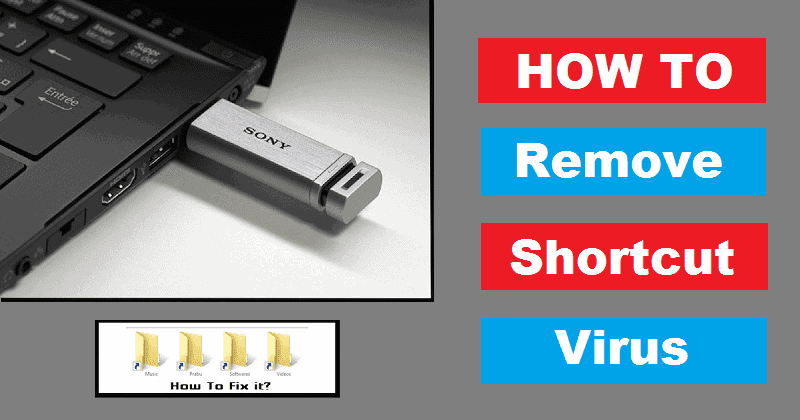What is a Virus?
According to TechieRide, a computer virus is a malicious software that self-reproduces by copying itself to a different program. In other words, the computer virus spreads on its own into various other executable code or data files.
The goal of creating a computer virus is normally to infect vulnerable systems, gain admin control and steal user private data. Hackers design viruses with malicious intent and victimize internet users by tricking them into downloading it.
One of several methods through which viruses spread is through emails – clicking the attachment in the email, visiting an infected internet site, simply clicking an executable file, or taking a look at an infected advertisement could potentially cause the virus to pass on to your computer.
Besides that, infections also get distributed while connecting with already infected removable storage products, like for example USB drives.
It is often easy and simple for computer viruses to sneak right into a personal computer by dodging the security systems. A successful breach could cause serious issues for an individual like for example infecting other systems or system software, modifying or deleting crucial features or applications and clone/delete or encrypt data.
What are Trojans and Worms?
Worms: Worms are quite identical to viruses for the reason that they are computer programs that reproduce functional copies of themselves (generally to other computers via network connections) and sometimes, but not always, contain some functionality which may interfere with the standard use of a computer or a program.
Unlike viruses, nevertheless, worms exist as unique entities; they don’t attach themselves to various other files or programs. Because of the similarity to viruses, worms are also known as viruses.
Trojan Horses: Trojan horse is an application that appears harmless, but is, actually, malicious. Unexpected adjustments to computer configuration settings and unusual activity, despite not using the system are strong indications a Trojan is definitely residing on a computer system.
Now, since we have understood the concept of Viruses, worms, and Trojan Horse, we can move further to discuss the concept of a Shortcut Virus.
Shortcut Virus:
A Shortcut is a type of worm and a trojan that when it enters your system affects it in a way that it will hide all your files, folders and documents and replaces them with fake shortcuts that looks exactly the same as that of the original icons.
When a user clicks on them, it launches a Malware which due to the property of a Virus, replicates itself into the whole system resulting in the theft of personal information, crashing of the system, installing other malware programs in the system making the condition even worse than ever before.
Shortcut viruses generally affect physical devices like USB flash drives, external hard disks, and SD storage cards, but can affect other computers when subjected to an infected system that takes benefit of Autorun or Autoplay in Windows.
Due to the advancement in the techniques used in the creation of Viruses, these Viruses remains undetected by the antivirus or anti-malware systems, so running a virus scanner generally is not going to be enough.
Fortunately, the procedure for manually getting rid of a shortcut virus could be not at all hard and painless.
In the remainder of this post, we will be using both the command prompt and a third party software to remove shortcut virus from pendrive or any other external drive. These methods are proven and tested.
(As a reference from TechieRide)
Removing shortcut virus from pendrive or other external devices:
- Insert the external drive to one of the USB slot.
- Open the file explorer and look for the external drive. Remember the alphabetical drive letter (let’s say G:).
- Open the command prompt or cmd by simply pressing the windows+r key simultaneously and type cmd in the search box and press enter.
- Type the drive letter of the external drive. In our case, it’s G:
so type, G: and press enter.
- Now, we will delete all the shortcuts on the external drive by this command:
del *.lnk
- Now, we will restore files and folders by this command:
attrib -s -r -h /s /d *.*
- Now, copy all the file from your external drive and paste it in your internal drive. Now, format your external drive and then again paste that files back to your external drive.
Automatic method to remove shortcut virus:
- Download EaseUS Data Recovery.
- Launch the exe file and install it.
- Open it and click on scan.
- It will show a list of all the lost files.
- Now, click on recover.
Conclusion:
From our conclusion of this article, if you want to stay away from any kind of malware, then do not download any file from any untrusted source and never visit any malicious looking site and always use a security suite like an antivirus.
Read More:
- SanDisk iXpand Flash Drive for iPhone, iPad, and PC / Mac
- SanDisk Ultra Dual Drive m3.0: Flash Drive for Android Phones and PC / Mac
- Photo Recovery Software Options to retrieve Digital Photography
- Tuneskit iPhone Data Recovery for Mac Review
- How Much Does Data Recovery Cost in USA







